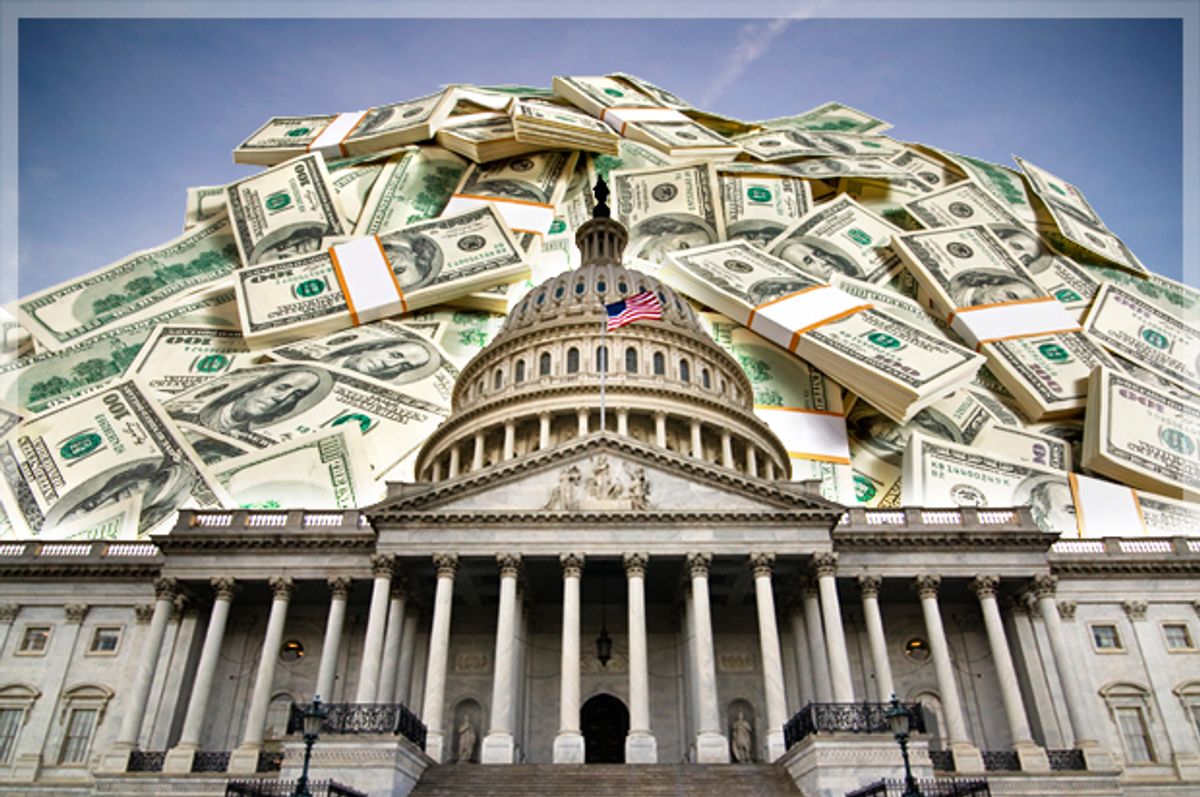The 2016 election cycle, when not dominated by discussion about the size of Donald Trump’s hands, has brought renewed vigor to discussions of racial inequality and money in politics. Yet while these issues have been at the forefront of political discussion, they are rarely discussed together. My new Demos report, D.C.’s White Donor Class: Outsized Influence In a Diverse City, shows why that’s a problem: the donor class is overwhelmingly white, which could influence policymaking. I also explore the class and gender demographics of people who donate to political campaigns. Previous research suggests the preferences of donors tend to be better represented, but I find that donors aren’t representative of the general population: they’re more likely to be rich, white, male and conservative.
How Donors are Different
While there has been a lot of work on money in politics, very little of it has explored the racial justice implications of campaign finance inequality. But using a pioneering method developed in coordination with leading political scientists Brian Schaffner and Jesse Rhodes of the University of Massachusetts-Amherst, I’m able to explore the demographics of donors (my last report examined Chicago). My new report examines members of the D.C. Council who ran for re-election over the last two cycles and the three major mayoral candidates in the 2014 election: Mayor Muriel Bowser, Vincent Grey (who lost the Democratic primary to Bowser) and David Catania (who ran against Bowser as an independent).
I find women are underrepresented in the donor pool, although the disparity is smallest among Bowser’s donors (47 percent female) compared with Catania (37 percent) and Gray (40 percent). As the chart below shows, the donor class does not represent the diversity of Washington, D.C.’s population. While 37 percent of D.C.’s population is white, 62 percent of mayoral donors and 67 percent of City Council donors are white. Further, though only a quarter of D.C.’s adult population makes more than $100,000, but 59 percent of Council donors and 61 percent of mayoral donors do. This provides some limited evidence that donors prefer co-gender or co-racial candidates (women made up a slightly larger share of Bowser’s donors and white people a slightly larger share of Catania’s donors).
Small Donor Diversity
One advantage of exploring the municipal level is that I’m able to examine the demographics of small donors (there is a disclosure limit of $200 at the federal level). I find that the small donor pool is far more diverse than the large donor pool. Women are equally represented in the small donor pool, but dramatically underrepresented in the large donor pool (see chart).
There are deep racial disparities as well. People of color make up 47 percent of mayoral donors giving less than $25, but 31 percent of those giving more than $1,000. In addition, the small donor pool contains more income diversity. Those making $100,000 or more comprise 44 percent of donors giving $25 or less to mayoral candidates, but 72 percent of those giving $1,000 or more.
As the chart above shows, the highest echelons of the donor pool are far more conservative than the general public (they are more liberal than the general public, but less liberal than the small donor pool).
Why Public Financing Matters
The fact that the small donor pool is more diverse means that empowering small donors would lead to a more diverse donor pool overall. That’s because while candidates have a lot of small donors, they raise most of their money from large donors. Imagine a candidate gets $10 from 10 small donors and but $100 from one large donor. While small donors make up 91% of donors, they account for only 9% of donors. That’s similar to what happened in the recent D.C. election. While those giving more than $1,000 made up 19 percent of donors, their donations made up a whopping 67 percent of contributions (see figure). Those giving less than $50 made up 22 percent of donors, but their donations made up less than 2 percent of contributions.
Because women, lower and middle-class individuals and people of color tend to make smaller donations, they account for a smaller share of the total money raised. As the chart shows, whites are 65 percent of donors, but their donations account for 70 percent of the money raised by candidates. Women make up 44 percent of donors, but 36 percent of the money raised comes from women donors.
By amplifying the more diverse empowering small donors, public financing would lead to a more representative donor pool, and possibly more representative outcomes.
Conclusion
Because of data limitations, there hasn’t been extensive research on the race, gender and income biases of the donor class. But new data, from both this report and my report on Chicago’s donor class, suggests that money in politics matters for racial justice and women’s equity. Donors, particularly large donors, are more likely to be rich, white, conservative men than the general public. Given new research suggesting that politicians are more likely to represent the preferences of donors than constituents, this is worrying (nearly a third of donations in DC elections came from outside of the city). The solution is a public financing system that would encourage politicians to raise fund in small dollar amounts from their constituents, not big outside donors.






Shares